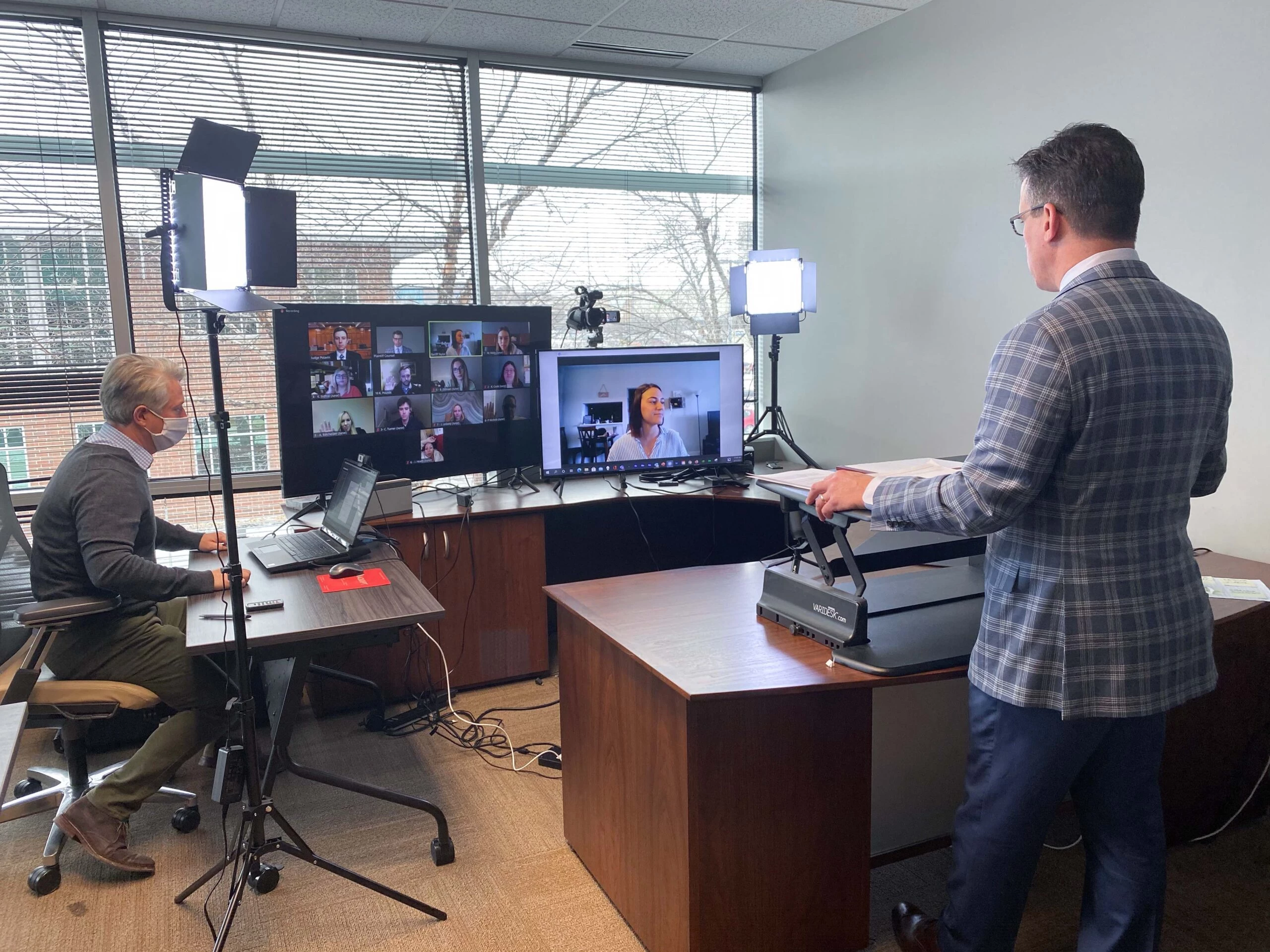By the IMS Insights Editor
Over the last year, the persistency of the coronavirus pandemic has forced us to reimagine nearly every aspect of our lives. And what we have learned — for better or worse — is that the way we do almost anything can change radically in a short period of time. This includes everything from the way we work, to how we provide and receive an education, to how we navigate the justice system.
The common theme here is that a good portion of what we used to do together in-person is now done remotely. In the realm of U.S. court proceedings, virtual hearings already seem to be something of a new normal. Of course, we can only say this is true for the time being, but there are multiple early indications that virtual hearings might continue to benefit courts in the future.
Courts are Adapting Well to Virtual Proceedings
Much like remote work and distance learning, virtual hearings are not an entirely novel concept or practice but had been much less common before the pandemic. Video conferencing technology has been around for a while, and many civil courts have had the experience and capability to facilitate virtual hearings since before they became downright necessary. Most criminal courts, on the other hand, had been reluctant and unprepared to conduct remote proceedings until the pandemic required it. When virtual hearings in certain cases became mandatory across nearly all fifty states, the justice system was forced to adopt this method as the new standard.
Overall, despite not having much time to adapt, courts appear to be faring well through this transformation. Litigators are finding that virtual hearings are a convenient answer to social distancing requirements and capacity limitations. Additionally, having a remote option has prevented a worst-case scenario of the pandemic — that cases would become irredeemably backed up in the system. Virtual hearings not only move proceedings along, but could also accelerate them. Therefore, there is a case to be made for allowing these methods to be developed further into the future.
People Seem More Willing to Appear in Court Virtually
The most observable result of more virtual hearings is a significant decrease in nonappearance rates. While it remains unclear whether the remote option itself is the cause for this or if it could be more intimately linked to the threat of the coronavirus, people currently seem more willing to attend their hearings when they do not have to physically appear in court. According to the National Center for State Courts (NCSC), courts across the country are reporting the same overall patterns. While some of these patterns are anecdotal, hard data already exists in at least a few states. Some examples include New Jersey, Michigan, and North Dakota. All of these states have demonstrated a notable downtrend in nonappearances, and North Dakota even recorded almost perfect attendance for criminal warrant hearings at one point last year.
If these trends continue, virtual hearings could prove to be the answer to crowded backlogs for legal cases across the board. Although the pandemic has exacerbated the problem, Markman hearings and numerous other civil proceedings are often plagued by capacity limitations in general. In theory, by building a new process around video and teleconferencing technology, we could greatly increase capacity and end up with a more efficient and reliable judicial system overall.
More Experimentation is Needed
While virtual hearings have shown promise throughout the pandemic, more experimentation and analyses are needed to determine possible benefits in the future. As more and more vaccinations are distributed to the public and restrictions begin to lift more permanently, it will be interesting to see how the courts respond. In fact, the NCSC currently maintains a visual guide of all virtual hearings in the US, which will be a valuable resource for watching trends and evaluating the efficacy of remote litigation going forward.
Ultimately, extending virtual hearing practices as the pandemic slows down is critical to understanding whether the benefits already observed are sustainable. If virtual hearings continue to positively impact appearance rates, these practices may have a lasting role in the litigation landscape post-COVID.






